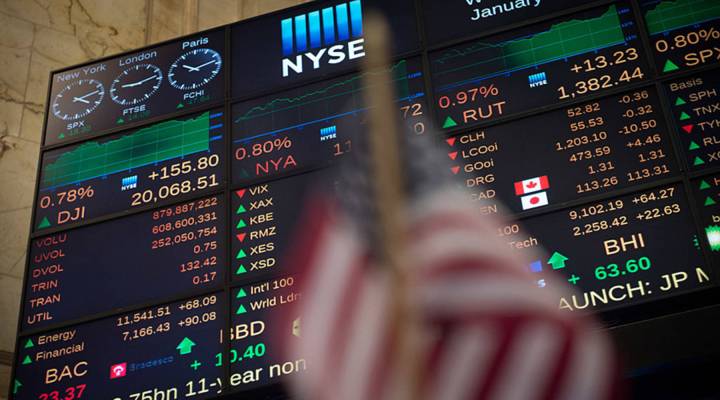
The global economy a decade after the financial crisis
The global economy a decade after the financial crisis

It’s been more than 10 years since the global financial crisis, and the global economy is in a much different place than it was then. But other risk factors may be on the horizon. Host David Brancaccio spoke with Susan Lund from the McKinsey Global Institute on the issue. She and her colleagues recently published a report called “A Decade After the Global Financial Crisis: What Has (and Hasn’t) Changed?”
Below are excerpts from their conversation.
Banks are “struggling to find profitable new business models.”
As a result of post-financial crisis regulations, like Dodd-Frank, that were passed in Europe and the U.S, banks have to hold more capital against their loans. This means they are more stable and can withstand future losses. But low interest rates, less demand for lending and declining return on equity are all factors limiting growth for banks.
According to Lund and her colleagues at McKinsey, return on equity for banks, which is a common metric used by investors, has declined by about 50 percent since the financial crisis. Some of this, Lund said, is good news because it means banks are decreasing their exposure to risk. “But with all this capital, they’re still struggling to find profitable new business models.”

Global debt and “the unknown unknowns” are two risks to watch out for.
While we can learn lessons from the factors that may have led to the last crisis, Lund and her team forewarn that growing global debt and new technologies are threats to financial markets. Rather than global debt staying flat or falling since the financial crisis, it has continued to grow by “a whopping $72 trillion, and it’s different borrowers this time.” Governments around the world like Argentina are struggling with massive debt while countries like Turkey are suffering a weakening currency largely due to corporate debt.
New technologies like cryptocurrency and the utilization of artificial intelligence that determines trading algorithms and personal investment decisions are another risk to look out for. There have already been flash crashes due to trading determined by computer algorithms and vulnerability to cyberattacks. A few years ago, for example, attackers attempted to steal hundreds of millions of dollars from the Central Bank of Bangladesh using SWIFT, which connects all of the world’s central banks. “It’s supposed to be the safest thing ever,” Lund said. She said we can expect more “unknown unknowns” that cause further unpredictability in the markets.
The world may be getting more connected, but financial markets are not. And that might be a good thing.
A less connected financial market means more stability because if a market in one country crashes, it is less likely to affect others. This means banks are focusing more on domestic markets, so cross-border lending is down from the financial crisis. “There will be some damage, but it won’t be the ripple effect we saw in 2008,” Lund said.

Click here to check out the rest of McKinsey Global Institute’s findings.
| “The enemy is forgetting”: Bernanke, Geithner and Paulson on why we must remember the 2008 financial crisis |
| Could the 2008 financial crisis happen again? |
There’s a lot happening in the world. Through it all, Marketplace is here for you.
You rely on Marketplace to break down the world’s events and tell you how it affects you in a fact-based, approachable way. We rely on your financial support to keep making that possible.
Your donation today powers the independent journalism that you rely on. For just $5/month, you can help sustain Marketplace so we can keep reporting on the things that matter to you.


















